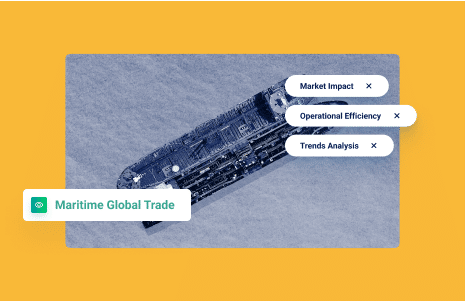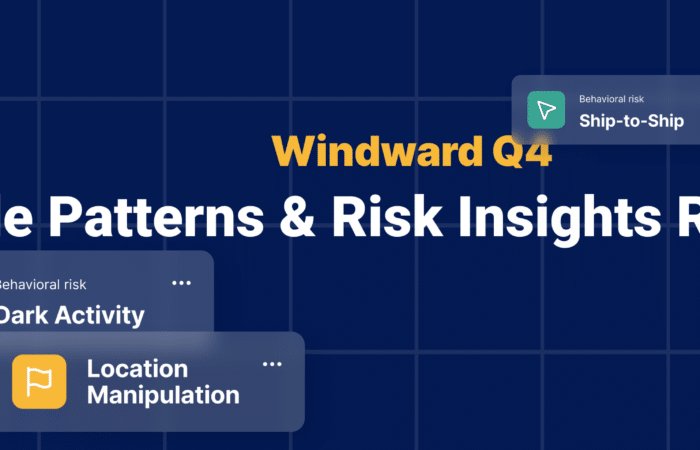What’s inside?
Shenzhen Shutdown
In the 48 hours following the Shenzhen shutdown announcement, there was no significant change in the number of port calls to Shenzhen ports which, in the context of container shipping, consist primarily of Yantian, Chiwan, and Shekou.
Between March 13-15, 2022, for example, 29 port calls were made to the Yantian port, which is a normal three-day average for that port. Every day that Shenzhen ports are not operating at full capacity could affect 79,644 twenty-foot equivalent units (TEUs).
During the June 2021 COVID-19 shutdown, Windward’s data indicates there was a 100% month-over-month spike in the number of container vessels waiting outside of Shenzhen ports:
- That month was the most congested since January 2020
- It is not a surprise that the drop back to normal occurred only at the end of the year, in December 2021
Should the congestion rise again in light of the current shutdown, we expect the Shenzhen ports to need about five-six months before going back to normal.
Slowdowns…
Windward identified a decrease in the overall commercial activity in Russian ports found around the Baltic Sea.
- March 5-11 was the slowest operational week for Russian ports in the Baltics since the beginning of 2022 and marked a decrease of over 20% in commercial vessel port calls
- This has been compensated for by a 17% rise in the surrounding countries – Estonia, Latvia, and Germany
- Self-sanctions have continued, with Canada banning entry of Russian-related vessels into its country, following the UK’s lead.
- As per our expectation from last week, both the marine insurance industry, as well as classification societies, have been pulling out from Russian commerce:
- ABS and Lloyd’s Register have stopped providing Russian vessels with class services
From the marine insurance perspective, P&I clubs are still reluctant to provide a clear answer on whether they will do business with Russian-related vessels.
- The withdrawal of classification services by Lloyd’s Register and ABS raises questions on whether protection and indemnity insurers can continue to cover Russian ships that are classed with the two societies.
- It will be interesting to see French BV and Norwegian/German DNV decide on their respective paths.
Notably, there was almost no movement on the front of the flags of convenience, AKA “open registries.” The most common registered flag of tankers visiting Russian ports in the past week was Liberia, with 11 unique tankers.
In comparison to the previous week, and the 2022 average thus far, the number of container vessels arriving in Russia last week dropped by 40%. In Estonia, Latvia, and Germany, however, Windward identified a significant rise of 41%.
Oil Trade
There is a spike in vessels leaving Russia with an “unknown” destination –indicating they haven’t arrived at their destination yet, or simply don’t know where to go. Meaning there are still about 46,000,000 Russian oil barrels still looking for an end buyer, or destination. According to Windward’s behavioral data, during this past week activities by American and British vessels in Russian ports are still taking place as usual.
Windward identified six crude oil tankers with American affiliation and an LNG tanker with British affiliation that arrived at the Russian port no earlier than March 9. Data indicates that most crude oil tankers (about 30) calling port in Russia since Feb 28 had registered owners, or registered beneficial owners, that are Greece-affiliated.
In the last week we saw a clear decrease in crude oil tankers calling port in Russia. The U.S. ban, together with the market’s “moral sanctions,” are not only stopping vessels from entering Russia, but are also affecting those leaving it. Crude oil carriers departing from Russia are no longer calling ports in Europe, Asia, and North America. After removing all sanction-designated vessels and entities, Russian-affiliated tankers, and those engaged in deceptive shipping practices from consideration, the original +9,000 refined products population decreases by 20% following the invasion.
What to Expect…
Many industries will take a “wait-and-see” attitude to the bilateral Ukraine/Russia negotiations when it comes to sanctions/regulations.
Flag registries will start coming to light, as they haven’t been discussed as part of the supporting ecosystem of Russian shipping. But without a flag and a classification, vessels can’t obtain insurance or enter port.
Further emphasis will be put on vessels and operators lifting cargo from Russia. It seems that the cargoes lifted post 28/2 (start of the invasion) are dwindling slowly and new cargoes are coming into the market. This will start separating the shipping community into those who are willing to work with Russia and carry cargos, and those who aren’t.
Finally, we will see the banks start forming their policy on Russia-related deals. The liquidity crunch the commodity trading industry is experiencing, together with compliance pressures, will both continue to create pressure on commodity trading firms.
















